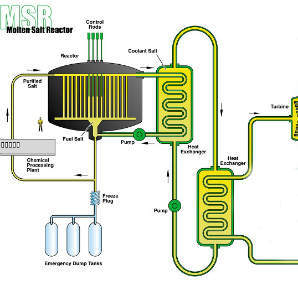Due to the power crunch that is affecting the northwestern US and California, utilities in the region are trying to extract more power from their hydroelectric dams. The unusually low precipitation this winter and the high power demand has drained reservoirs to the extent that it is exposing landscapes behind the dams previously seen only prior to impoundment.
Usually utilities in the northwest begin storing water for the year at this time, and buy power from California as it normally has a surplus during the winter. But California’s failed deregulation has driven power prices so high that northwest producers are opting to drain their reservoirs rather than buy power from outside; as it stands, California has little power to sell to the northwest.
The reservoir behind Washington’s 184m high Mossyrock dam has not been this low since 1968, when the dam was first impounded. The dam’s two 150MW turbines are generating at less than half capacity. Mossyrock dam, built across the Cowlitz river, supplies the city of Tacoma with electricity. Meanwhile, Seattle City Light’s Ross Lake reservoir near Mount Baker is 2m lower than its usual level. The same low water elevations prevail at the Columbia river dams including the Grand Coulee dam, operated by the US Bureau of Reclamation.
To keep up with demand the Bonneville Power Administration (BPA), which markets power from Columbia river dams, has operated the hydro system more aggressively to avoid a 1000MW shortfall in the northwest. Increasing flow from the reservoirs, however, has meant declaring an emergency so that power demand can take priority over fish protection. Releasing more water out of Grand Coulee dam will not have any immediate effect on endangered fish, but it could reduce the likelihood that reservoirs will be able to refill to provide targeted river flows for fish in spring and summer. Prior to taking this action, BPA had already activated several other steps to ease the crunch, including buybacks of power from customers, especially aluminum smelters, and calls for energy conservation. The agency has spent US$200M to buy back 1300MW of power from aluminum companies.
Power production at federal dams is also limited due to a federal salmon protection plan. That plan, issued in December 2000, calls on water to be held in storage reservoirs, such as eastern Washington’s Grand Coulee and Idaho’s Dworshak, for release in spring and summer to speed and cool rivers to help young salmon reach the ocean. The plan also calls for some water to be sent through spillways instead of through turbines to provide a safer passage for young salmon past dams. All of that reduces the amount of electricity that can be generated at federal dams by 980MW, a reduction of about 10%.
In its briefing, to the members of the Power Planning Council (PPC), a four-state panel charged with balancing the region’s power needs with wildlife protection, BPA requested exemptions from the federal operating requirements. The PPC has agreed, saying it did not think BPA had any choice.
According to Greg Delwiche, BPA’s vice president for generation, the utility’s dilemma has been caused by the northwest’s near-drought which means there is 37% less water than normal in the Columbia river basin to drive turbines at 29 federal dams.



